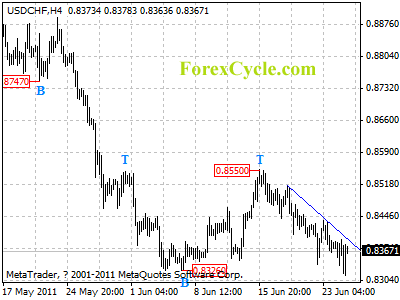An Easy Way to Invest in International Stocks
by Carl Delfeld, Investment U Senior Analyst
Monday, June 27, 2011
As interest in investing in overseas markets has grown, so has interest in foreign stocks listed on US exchanges. These are known as American Depository Receipts or ADRs for short. Let’s learn a bit about how they work, the benefits to you as an investor.
ADRs which are certificates issued by a U.S. bank representing shares in a foreign stock that is traded on a U.S. exchange. Sounds complicated but ADRs are actually designed to make investing in overseas companies easy.
They are not some new fangled financial invention. JPMorgan created the first depositary receipt in 1927 for UK retailer Selfridges. There are now almost 2,000 ADRs from over 80 countries listed on NYSE, AMEX or NASDAQ exchanges.
But, as we shall learn, not all are equal.
The growth of ADRs during the last 25 years has been impressive. ADRs now account for more than 15 percent of the value of the entire U.S. stock market.
In America alone, the level of investment in foreign equities exceeds $2 trillion, reflecting 100-fold growth since 1980. One good example is British Petroleum (BP). In many ways, it is more an American than British are. It is the largest producer of oil and gas in the U.S. and over the past five years has invested more than $30 billion in U.S. energy projects. In addition, Americans own around 40 percent of BPs shares.
Foreign companies like ADRs because they get more U.S. exposure, allowing them to tap into the wealthy North American equities markets to raise capital and broaden share ownership at the same time.
Here is a quick primer on ADRs.
What are the benefits of ADRs?
- Denominated in U.S. dollars and depositary bank will convert any dividends or other cash payments into U.S. dollars before sending them to you
- Offer a cost-effective way to buy shares in a foreign company and avoid foreign taxes on each transaction.
However, keep in mind that ADRs do not eliminate the currency and economic risks that go along with investing in another country. For example, dividend payments in euros would be converted to U.S. dollars, net of conversion expenses and foreign taxes and in accordance with the deposit agreement. This has been a welcome feature for the last few years, as the U.S. dollar has declined relative to most major currencies but it could go the other way as well.
Are All ADRs equal?
It is important that investors realize that there are three different types of ADR issues which have different SEC reporting requirements:
- Level 1 – This is the most basic type of ADR where foreign companies either don’t qualify or don’t wish to have their ADR listed on an exchange. Level 1 ADRs are found on the OTC market. Level 1 ADRs also have the loosest requirements from the SEC.
- Level 2 – This type of ADR is listed on an exchange or quoted on Nasdaq. Level 2 ADRs have slightly more requirements from the SEC.
- Level 3 – The most prestigious of the three, this is when an issuer floats an offering of ADRs on Nasdaq or the NYSE.
Once an ADR is priced and sold on the market with its price is determined by market forces just like an ordinary stock. ADRs tend to follow the general trend of the home country shares, but this is not always the case. Sometimes they can be a bit more expensive than the dollar value of their home shares.
Are ADRs still Growing?
As global trading platforms have become more sophisticated with lower trading costs, most U.S. institutional investors now invest in foreign shares directly from overseas exchanges. In addition, the costs and legal burdens of listing foreign shares as US exchange-listed ADRs has also become a burden.
This has led to 83 foreign firms delisting from the NYSE since 2007 including Germany’s Deutsche Telekom, insurer Allianz and Daimler as well as U.K.-based Cadbury and British Sky Broadcasting, France’s Axa, Mexico’s Telmex, Spain’s Repsol and India’s Satyam Computer Services. Nasdaq reports that 51 foreign firms have delisted over this period as well.
Many of these companies have moved their listings to the lower cost and less regulated OTC market. I refer to these companies as “Pink Sheet Blue Chips.”
ADRs remain the easiest way for investors to tap the growth of international companies but not all are equal. Pay careful attention to where they are listed and trading volume to avoid any surprises.
Good investing,
Carl Delfeld










 For the past two days, I’ve been driving…
For the past two days, I’ve been driving…